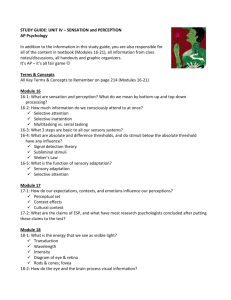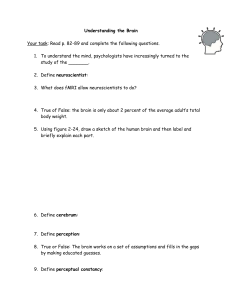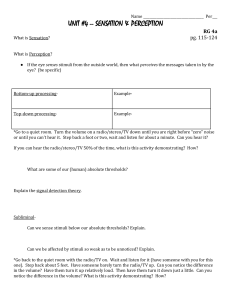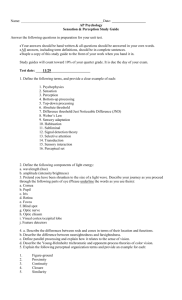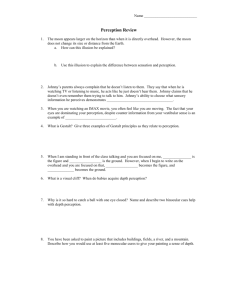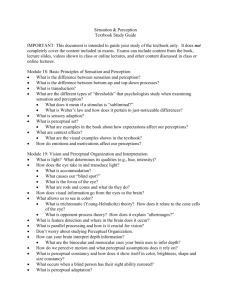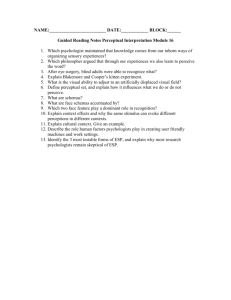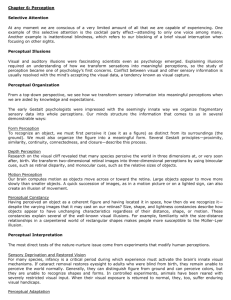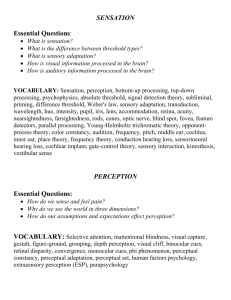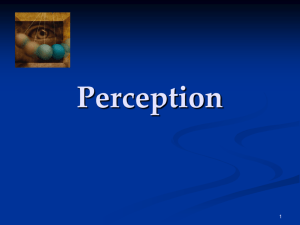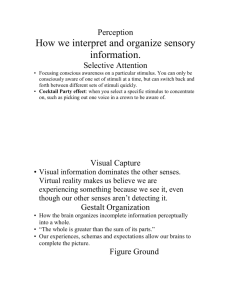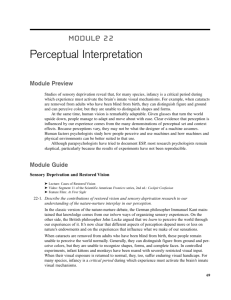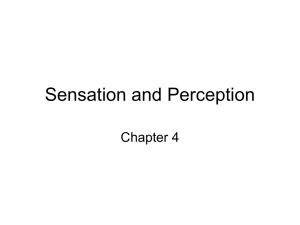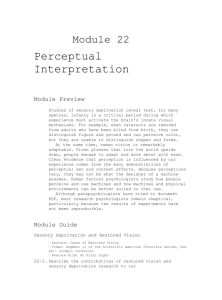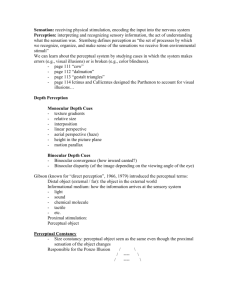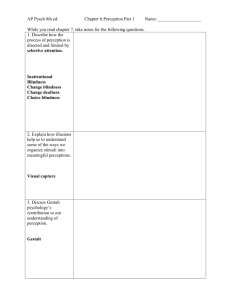STUDY GUIDE: UNIT 4 – SENSATION and PERCEPTION AP
advertisement
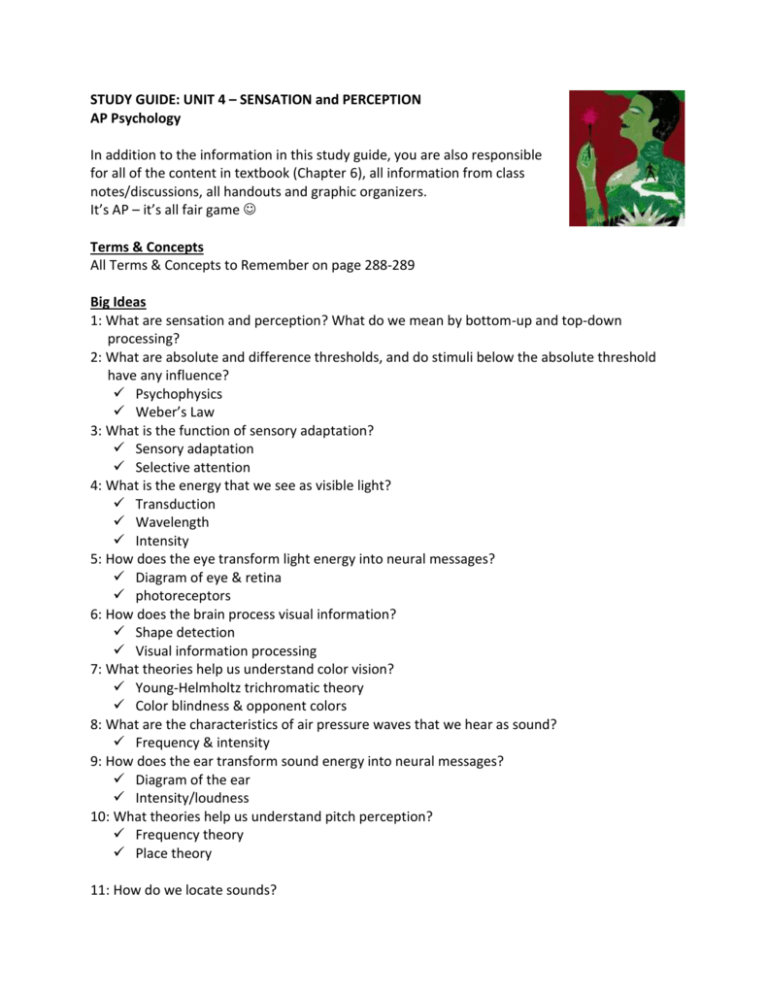
STUDY GUIDE: UNIT 4 – SENSATION and PERCEPTION AP Psychology In addition to the information in this study guide, you are also responsible for all of the content in textbook (Chapter 6), all information from class notes/discussions, all handouts and graphic organizers. It’s AP – it’s all fair game Terms & Concepts All Terms & Concepts to Remember on page 288-289 Big Ideas 1: What are sensation and perception? What do we mean by bottom-up and top-down processing? 2: What are absolute and difference thresholds, and do stimuli below the absolute threshold have any influence? Psychophysics Weber’s Law 3: What is the function of sensory adaptation? Sensory adaptation Selective attention 4: What is the energy that we see as visible light? Transduction Wavelength Intensity 5: How does the eye transform light energy into neural messages? Diagram of eye & retina photoreceptors 6: How does the brain process visual information? Shape detection Visual information processing 7: What theories help us understand color vision? Young-Helmholtz trichromatic theory Color blindness & opponent colors 8: What are the characteristics of air pressure waves that we hear as sound? Frequency & intensity 9: How does the ear transform sound energy into neural messages? Diagram of the ear Intensity/loudness 10: What theories help us understand pitch perception? Frequency theory Place theory 11: How do we locate sounds? 12: What are the common causes of hearing loss, and why does controversy surround cochlear implants? Conduction hearing loss Sensorineural hearing loss Cochlear implants – why the controversy? 13: How do we sense touch and our body’s position and movement? How do we experience pain? Kinesthesis & vestibular sense Gate control theory & biopsychosocial influences Pain control 14: How do we experience taste? Sensory interaction 15: How do we experience smell? 16: How did the Gestalt psychologists understand perceptual organization? 17: How do figure-ground and grouping principles contribute to our perceptions? Form perception & grouping 18: How do we see the world in three dimensions? Depth perception & visual cliff Binocular & monocular cues 19: How do we perceive motion? 20: How do perceptual constancies help us organize our sensations into meaningful perceptions? Perceptual constancy, color constancy, size-distance relationship, lightness constancy Ames room 21: What does research on sensory restriction and restored vision reveal about the effects of experience? Perceptual interpretation (Kant & Locke) Facial recognition 22: How adaptable is our ability to perceive? Perceptual adaptation 23: How do our expectations, contexts, and emotions influence our perceptions? Perceptual set Context effects Cultural context 24: How do human factors psychologists work to create user-friendly machines and work settings? Human factors psychologists 25: What are the claims of ESP, and what have most research psychologists concluded after putting these claims to the test?

